
With the global concern on Climate Change and the need to reduce the use of fossil fuels such as oil and gas as the source of energy because of its negative impact towards the environment, there is a need to move towards renewable energies and more environmentally friendly fuels. One form of energy which is being advocated is Hydrogen.
Based on the source and production process, Hydrogen is commonly classified today in three categories – Grey Hydrogen, Blue Hydrogen and Green Hydrogen.
Grey Hydrogen is sourced from natural gas and is produced by a method called steam methane reforming which emits large amounts of carbon dioxide. Blue Hydrogen is produced the same way as Grey Hydrogen but the carbon dioxide is captured and stored under the Carbon Capture Utilisation and Storage (“CCUS”) methodology. Lastly, Green Hydrogen is produced by the electrolysis of water which splits water molecules into oxygen and Hydrogen using renewable energy such as solar energy, wind energy and hydroelectric energy1.
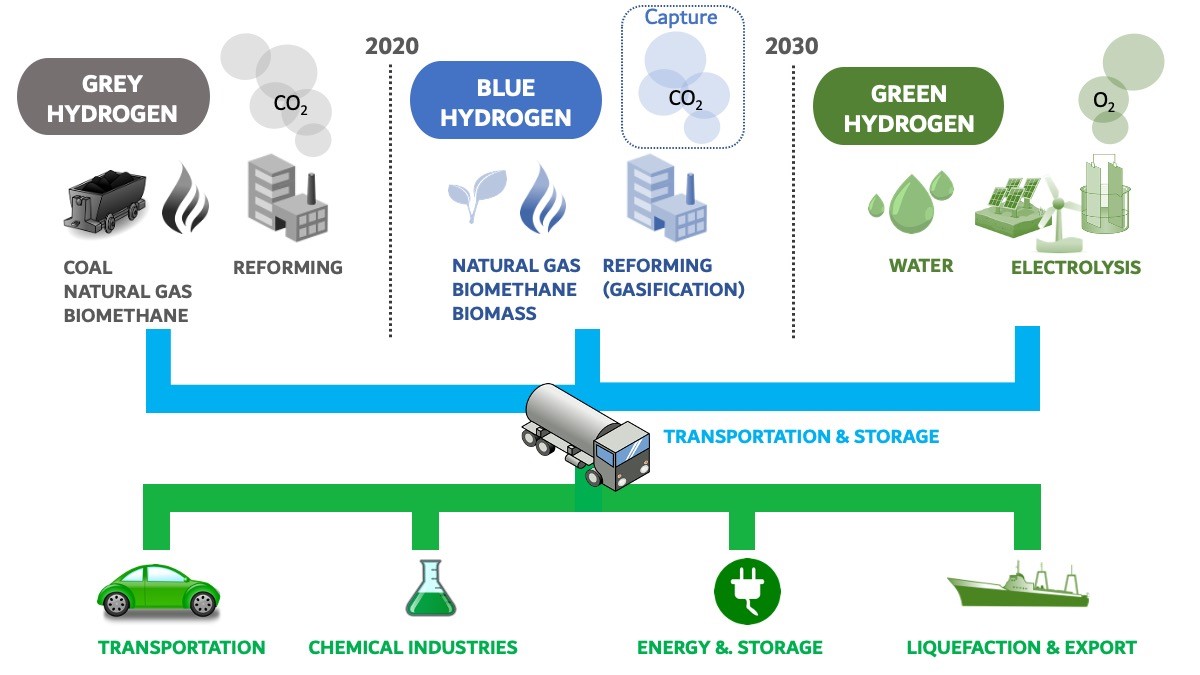
Hydrogen in Malaysia
In 2001, Malaysia identified Hydrogen fuel cells as a priority research area and R&D funds were allocated. A Hydrogen road map was formulated in 2006 and a blueprint for fuel cell industries in Malaysia was published in 20172.
PETRONAS has conducted studies with academic institutions on the production of Hydrogen from biomass waste3 and from water through electrolysis which resulted in the development of the PETRONAS Advanced Proton Exchange Membrane (PEM) Electrolyser4.
PETRONAS has also collaborated with commercial entities such as ENEOS Corporation (ENEOS) on Hydrogen production and its transportation in methylcyclohexane (MCH) form and IHI Corporation and TNB Genko on Hydrogen and Ammonia supply chain in Malaysia5.
Sarawak has taken steps for the production and use of Hydrogen, being well-placed in the supply of natural gas and also hydroelectricity. Sarawak introduced Hydrogen-powered electric vehicles (“EV”) (Hydrogen-powered buses) in 2020 and in July 2022, Sarawak implemented the Kuching Urban Transportation System (KUTS) Project involving Hydrogen fuel cell-powered Autonomous Rapid Transit (ART) vehicles6.
A MOU was entered into between Sarawak Energy, SEDC Energy, Samsung Engineering, Lotte Chemical, and Posco Holdings for the supply of renewable hydropower for a Green Hydrogen and Ammonia project in Sarawak7.
SEDC Energy, H2X and Thales New Energy collaborated in a Hydrogen export facility to produce Green Ammonia and Green Hydrogen, and another project is the Sumimoto-ENEOS-SEDC Hydrogen plant in Bintulu, producing Green Hydrogen8.
Laws and Regulations on Hydrogen Utilisation in Malaysia
A legal framework is necessary to provide an organized structure for the Hydrogen supply chain – production, transportation, storage and utilisation.
Production
Production of Hydrogen would be by facilities sited in industrial zones or in an approved standalone area. The laws and regulations relating to industries would be applicable and amendments may be necessary to include the production of Hydrogen to Malaysian laws including, land law (e.g. production of Blue Hydrogen which includes CCUS), the Industrial Co-ordination Act 1957 and the Occupational Safety and Health Act 1994.
Storage
Storage of Hydrogen at production facilities as well as at the consumer’s premises is necessary in the Hydrogen supply chain and there are laws and regulations which govern the methods and conditions in which Hydrogen should be stored. In Malaysia, the Department of Occupational Safety and Health has developed Guidelines on Storage of Hazardous Chemicals which provide where chemical storage areas should be located and requirements of a warehouse to store hazardous chemicals.
There are also industry specific codes which are developed for the storage of Hydrogen which include the technical code for Hydrogen Storage and Safety with Fuel Cell as Power Generator for ICT infrastructures (“Technical Code”). The Technical Code was developed by the Malaysian Technical Standards Forum Bhd pursuant to the Communications and Multimedia Act 1998 to assist ICT industries which utilise Hydrogen-powered fuel cells as power supply by specifying requirements for handling, labelling and storage of Hydrogen9.
Transportation – Road
The transportation of Hydrogen, which is explosive and flammable, requires proper and specific laws and regulations to govern the technical standards on vehicle loading methods, transportation methods and safety measures for the storage of Hydrogen on the transportation vehicle. The Road Transport Act 1987 and the relevant regulations would have to be amended to cater for the transportation of Hydrogen by road.
Transportation – Rail
Hydrogen may also be transported using Hydrogen wagons, similarly in which liquefied petroleum gas is transported using LPG wagons. Thus, the Railways Act 1991 and the relevant regulations would have to be amended for the transportation of Hydrogen by rail.
Transportation – Pipeline
Pipeline networks are one of the most commonly used systems for transporting gas as pipelines can stretch up to thousands of kilometres, easing the transportation process of gas over long distances. Gas pipelines require very stringent laws, regulations and codes (such as the Third Party Access (TPA) Code) to ensure that the gases are transported in proper conditions and to ensure the safety of the operations.
Under the Gas Supply Act 1993 (“GSA”), the transportation of gas is one of the activities which requires a licence by the Energy Commission. However, the current definition of “gas” in the GSA may not include Hydrogen as a form of gas. Thus, the definition of gas in the GSA needs to be amended to ensure that the provisions under the GSA govern the transportation and utilisation of Hydrogen in Malaysia (unless a specific Act for Hydrogen is enacted). The Energy Commission may need to provide codes for Hydrogen transported within existing gas pipelines or for new infrastructure dedicated to transporting Hydrogen.
Transportation – Shipping
Hydrogen may also be transported using Hydrogen carriers/tankers, travelling between ports. Thus, the Merchant Shipping Ordinance 1952 and the relevant regulations would have to be amended by providing technical criteria for the storage or loading/unloading methods to be used when shipping Hydrogen.
Safety
Due to its flammable nature, Hydrogen could be considered to be a dangerous chemical for storage and utilisation. In this regard, laws and regulations which protect the safety of Hydrogen operations are required.
The Gas Supply Regulations 1997 (“GSR”) provides regulations on the installation, operation and maintenance of gas installations, to ensure that gas installations are operated safely. The GSR also provides requirements for categories of persons who work in the gas industry and states that only persons who hold a Certificate of Competency (Competent Person) can work on a pipeline or gas installations. The GSR also provides for the requirements for Gas Engineers, Gas Fitters and Gas Contractors.
Hydrogen production facilities and refuelling stations would also have to be in compliance with the Street, Drainage and Building Act 1974 and its regulations. The Guidelines on Storage of Hazardous Chemicals by the Department of Occupational Safety and Health provides key responsibilities for those who manage hazardous chemicals and for the proper classification of dangerous chemicals. In respect of residential use (assuming a mixture of Hydrogen and natural gas), the Guidelines on Domestic Gas Piping System by the Department of Gas Safety and Supply of the Energy Commission provides safety guidelines for piped fuel gas installations which include guidelines on the gas pressure, gas metering and specifications of gas pipes.
Environment
The production of Hydrogen (especially Grey Hydrogen) must be governed by adequate environmental laws to ensure that the environment is protected. The Environmental Quality Act 1974 which provides prohibitions on pollution such as noise pollution, emissions and pollution into the soil (which may be relevant to the production of Blue Hydrogen) would govern the production of Hydrogen.
Financial Incentives
To encourage the utilisation of Hydrogen, financial incentives could be provided by the government. As part of the national Budget 2022, a tax exemption was introduced for EVs (including fuel cell vehicles) from 1 January 2022 until 31 December 202510. The tax exemption should appeal to potential investors who are planning for the manufacture and sale of Hydrogen fuel cell vehicles in Malaysia. Other financial incentives such as grants and other tax incentives could also be introduced.
Standards/Permits
To ensure that the utilisation of Hydrogen in Malaysia is carried out efficiently, a set of standards which regulate Hydrogen operations is needed. Such standards should also comply with international standards to ensure a seamless integration for the use of Hydrogen internationally and locally. Such standards could cover, for example, labelling and nozzles at Hydrogen refuelling facilities, avoiding a common integration problem in EVs having different designs and specifications as to their charging points.
Conclusion
Malaysia has indeed made progress in respect of introducing Hydrogen into the energy system. A legal framework for Hydrogen is needed to promote the acceleration towards a higher utilisation of Hydrogen in the energy system. Thus, with an established legal framework, high Hydrogen utilisation in Malaysia would be realised and be beneficial for the sustainable socioeconomic development of the country.
Authors:
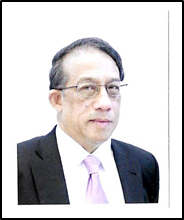 Mahadi Abdullah holds a degree in economics from Brandeis University, USA, an LLB (Hons) degree from the University of London and the Certificate in Legal Practice (CLP). He is admitted to practice at the High Court of Malaya as an advocate and solicitor. He was working in PETRONAS, for 33 years and has broad experience in both the legal and commercial aspects of the Malaysian and international oil and gas industry, having held positions in the international marketing, corporate planning, oil downstream planning and legal services divisions of PETRONAS.
Mahadi Abdullah holds a degree in economics from Brandeis University, USA, an LLB (Hons) degree from the University of London and the Certificate in Legal Practice (CLP). He is admitted to practice at the High Court of Malaya as an advocate and solicitor. He was working in PETRONAS, for 33 years and has broad experience in both the legal and commercial aspects of the Malaysian and international oil and gas industry, having held positions in the international marketing, corporate planning, oil downstream planning and legal services divisions of PETRONAS.
 Nafis Zain graduated with LL.B Hons from the University of Essex, United Kingdom in 2017. He then obtained the Bar Professional Training Course and Master of Laws (BPTC LLM) and was subsequently called to the Bar of England and Wales by the Honourable Society of the Middle Temple in 2019. Nafis has been involved in matters relating to Construction, Energy, Oil & Gas and Mergers & Acquisitions.
Nafis Zain graduated with LL.B Hons from the University of Essex, United Kingdom in 2017. He then obtained the Bar Professional Training Course and Master of Laws (BPTC LLM) and was subsequently called to the Bar of England and Wales by the Honourable Society of the Middle Temple in 2019. Nafis has been involved in matters relating to Construction, Energy, Oil & Gas and Mergers & Acquisitions.
- 1 https://www.mida.gov.my/hydrogen-as-an-attractive-new-energy-source-carrier/
- 2 https://www.theedgemarkets.com/article/cover-story-malaysia-ready-hydrogen-economy
- 3 https://www.upstreamonline.com/hydrogen/petronas-on-green-hydrogen-drive/2-1-1335791
- 4 https://www.petronas.com/flow/technology/hydrogen-game-changer
- 5 https://www.petronas.com/flow/technology/hydrogen-game-changer
- 6 https://www.theborneopost.com/2022/07/20/sarawak-metro-awards-kuts-projects-rm1-425-bln-system-package-1-contract/
- 7 https://hydrogen-central.com/sarawak-poised-hydrogen-producer-2027-says-premier-malaysia/
- 8 https://www.theedgemarkets.com/article/my-say-sarawaks-green-hydrogen-plans-will-take-some-doing
- 9 https://www.mcmc.gov.my/skmmgovmy/media/General/pdf/MTSFB-066_2019_Power-Generator-Hydrogen-Storage-And-Safety.pdf
- 10 https://www.thestar.com.my/news/nation/2022/02/14/exemption-on-motor-vehicle-licence-fee-given-to-pwd-electric-vehicles-says-dr-wee


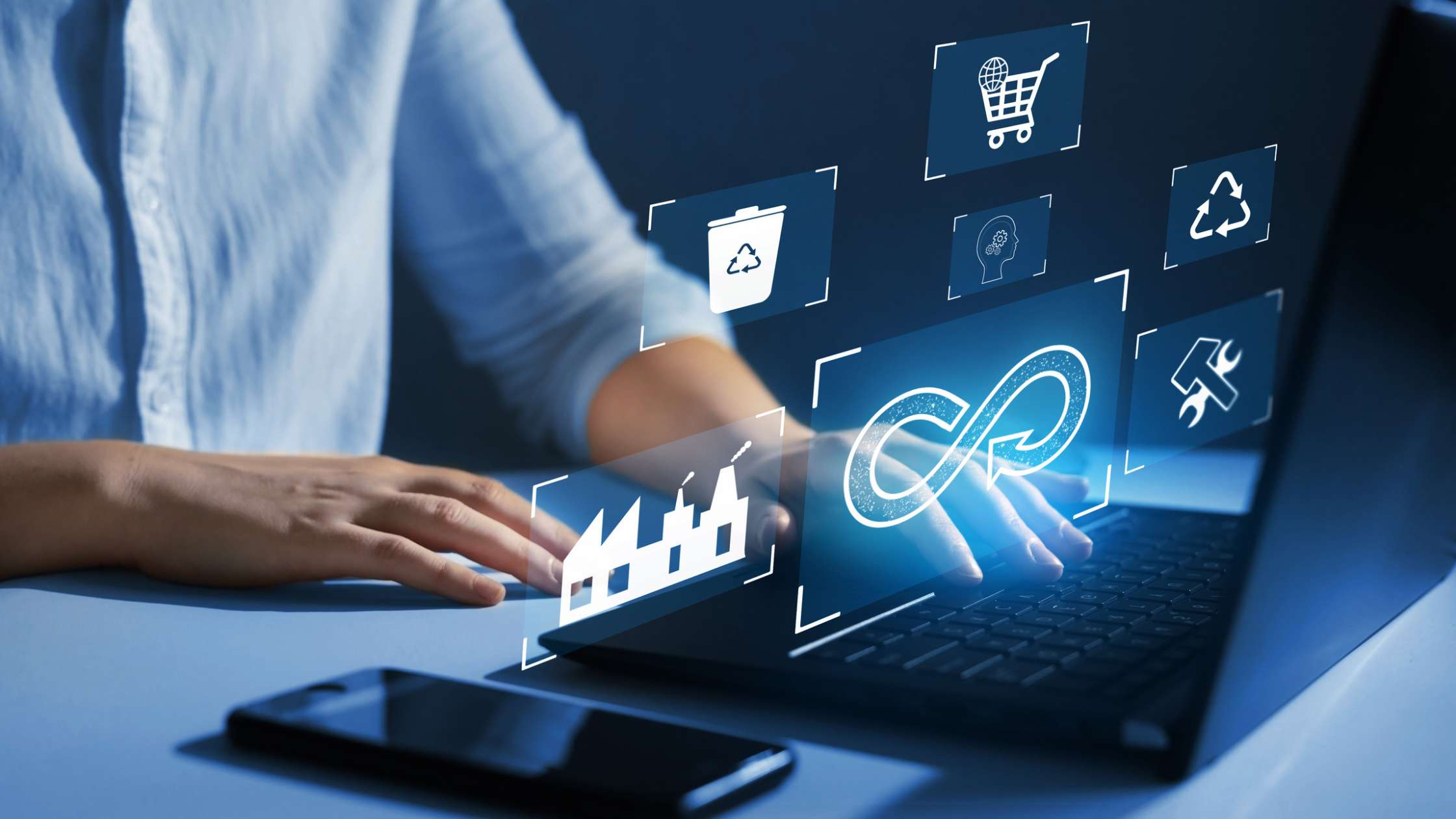
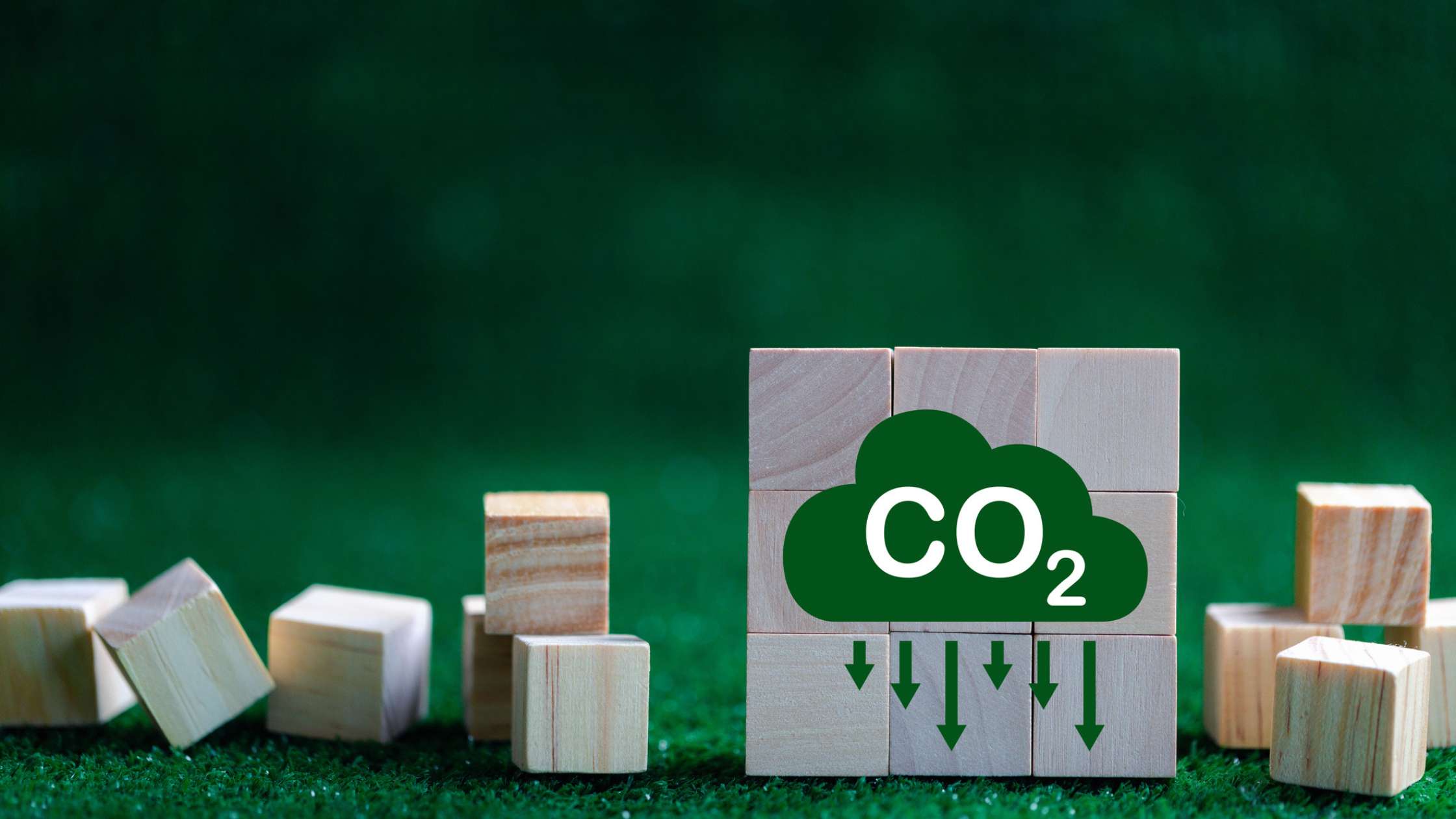
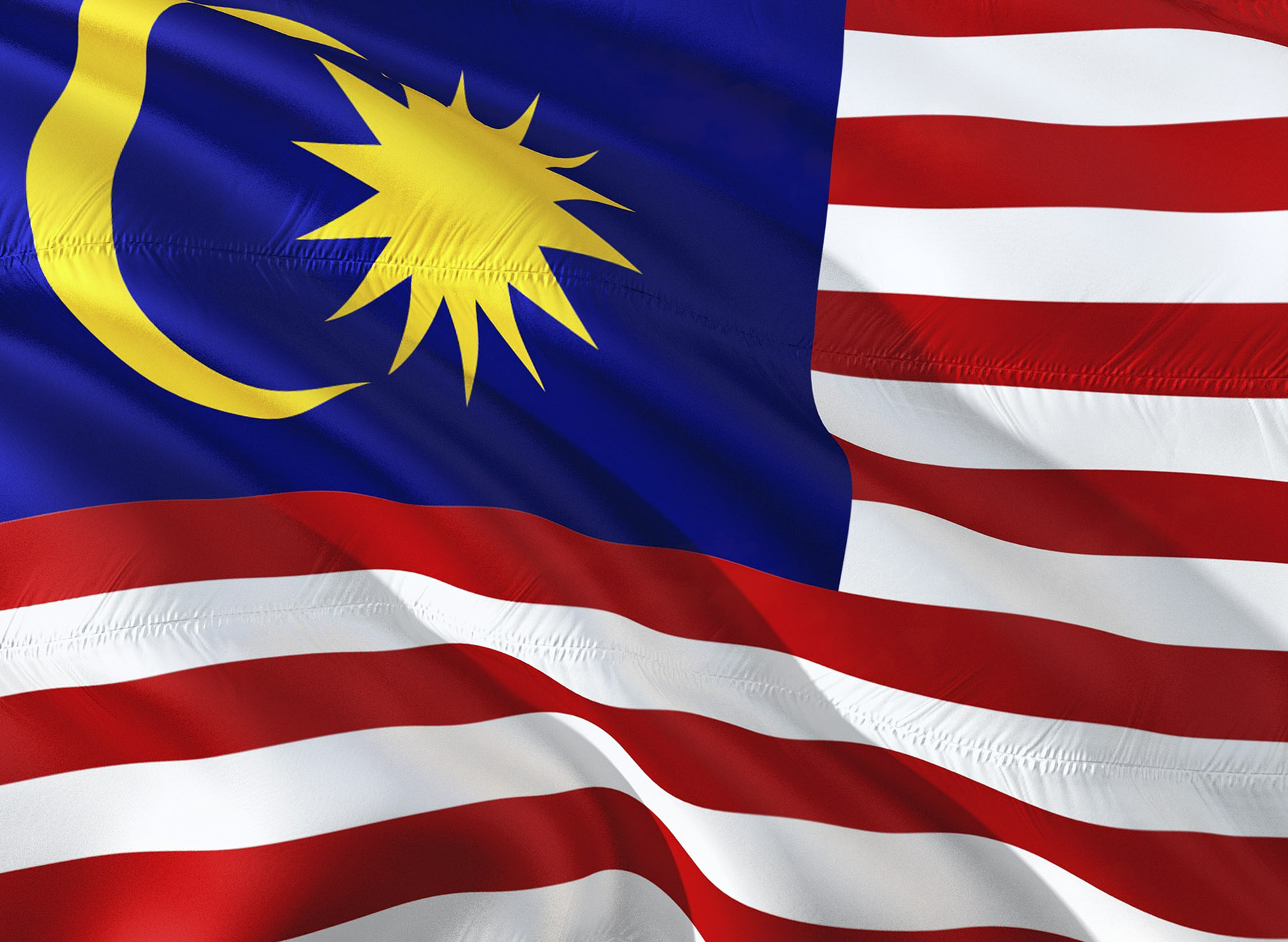







 Azmi & Associates
Azmi & Associates Dato’ Azmi Mohd Ali
Dato’ Azmi Mohd Ali Norhisham Abd Bahrin
Norhisham Abd Bahrin Syed Zomael Hussain
Syed Zomael Hussain




